So, what’s not to like about walking the Camino Portuguese from Porto to Santiago? You get to “recharge your batteries” with time out in nature, enjoy beautiful scenery in Portugal & Spain, explore cool medieval old town centers, eat good food, meet friendly & welcoming local people, and make wonderful new friends from around the globe!
As a Camino “pilgrim,” your task is to simply walk each day – rain or shine – and experience whatever the Camino has in store for you, providing its many joys & occasional challenges!
I’m happy to report that I successfully completed my June 2023 Camino Portuguese by reaching the beautiful Cathedral in Spain’s Santiago de Compostela (photo on right). Over 13 days, I had walked 150 miles across Portugal & Spain.
Each morning, I would put on my hiking shoes & backpack and walk the six or so hours needed to arrive at that afternoon’s destination town en route to Santiago. This Camino journey turned out to be a wonderful experience that I’m excited to share with you!
What is the Camino de Santiago?
The Camino de Santiago is a series of ancient pilgrimage routes from all around Europe leading to the city of Santiago de Compostela in northwest Spain. That’s where its cathedral is believed to contain the remains (and relics) of the Apostle St. James (Spanish name – Santiago).
These days, the Camino draws a wide array of walkers (and cyclists) who do it for many different reasons – spiritual, adventure-seeking, life transitions, time in nature, etc. In fact, you don’t need to be religious – at all! – to walk the Camino. Regardless of motive, all walkers are called “pilgrims” (peregrino in Spanish).
Walking one of the centuries-old Camino pilgrimage routes through Spain & Portugal’s beautiful countryside has become very popular in recent years. In fact, in 2022, over 400,000 pilgrims received their compostelas (certificates of completion) in Santiago. And post-pandemic 2023 is looking to be the Camino’s busiest year yet!
About the Camino Portuguese
The Camino Francés route from St. Jean Pied de Port in France across northern Spain to Santiago is still the most popular & well-known Camino route. However, the Camino Portuguese (CP) has become the second most popular.
The CP offers a lot of the same allure – beautiful scenery, well-marked paths, good “pilgrim infrastructure” (with lots of lodging & food options), and plenty of cool fellow pilgrims to meet along the way.
There are a few different Camino Portuguese routes, with the Central Camino being the main historic route & the most popular. It begins in Lisbon but the great majority of pilgrims – like me! – start further north in the delightful city of Porto. This is where good pilgrim services really begin.
The next most popular CP route is the Coastal Way. Plus there is the seashore path (Senda Littoral) that I took on my first day. (See the good map by Chris & Jody showing the same route I took.)
The Central Camino crosses the Portuguese-Spanish border at the Minho River bridge connecting the cities of Valença (Portugal) and Tui (Spain). This took place for me on Day #6, giving me almost equal time in the two countries.
My Camino Portuguese Walk – May/June 2023
This was my 3rd Camino! The first two Camino walks were in 2016 & 2018 on the Camino Francés. I had divided that 480-mile route into two trips, taking three weeks each. I traveled alone and walked as a “traditional” pilgrim – carrying everything I needed in my 20-pound backpack and staying primarily in pilgrim hostels (inexpensive dorm rooms!).
This time, I was eager to experience a new Camino route & get to know Portugal, a lovely country that has become very popular with international travelers – and for good reason!
Besides walking a new route, this CP experience was different in that my good friend Regina (a German from Munich) joined me. (photo below) Walking the Camino together for 13 days, we stayed in private lodging each night and shipped our main bags ahead each day, thus being able to carry lighter daypacks.
Before the actual Camino walk, I “played tourist” for a few days in Portugal, exploring Lisbon, Sintra, and Porto. All three towns are filled with wonderful sights. I will write a separate blog post soon on charming Porto.
This Camino Blog Post
In sharing highlights of Regina & my Camino Portuguese, I hope to give you a strong feel for this very unique experience. I realize many readers will have no desire (or ability) to walk a Camino, so please come along with me to enjoy a vicarious journey across Portugal & Spain.
However, some of you just might feel an urge to consider a future Camino. If so, please know there are many, many ways to walk a Camino. Ultimately, you can decide what is right for you – including what route, total distance (from 5 days to 5-6 weeks), how far you walk each day, whether you go alone or with a friend or family member, and whether you stay in private lodging or pilgrim hostels or a mix of both. (See “More Camino Info” at the bottom of this article to learn more.)
So, let’s get started…
STARTING THE CAMINO – COAST FIRST, THEN CENTRAL ROUTE
Day One – Senda Littoral “Beach Walk” (19km/11.8 miles)
On Camino Day #1 (Monday, May 29th), we chose to walk the Senda Littoral “beach route” from outside Porto to Vila do Conde – our first stop for the night. The next day, we would meet up with the inland Central Route to walk the rest of our Camino. But I couldn’t resist this small taste of coastal ocean views first!
While touring Porto the day before, Regina & I visited its beautiful Cathedral, the official starting point of the Camino from Porto. In the cathedral’s large courtyard, we got the obligatory photo in front of the iconic Camino stone marker stating 248 km to Santiago.
That next morning, with great anticipation and some nervousness, we took an Uber taxi from Porto to the neighboring town of Matosinhos (distance of 15 km). There, at the cute chapel (Capela Boa Nova), we officially started our Camino walk. First, we got our pilgrim passports (“credencial”) stamped at the nearby café.
The Senda Littoral path began right here, heading north on a 10-mile network of wooden boardwalks. We walked along a beautiful Portuguese coastline of white sandy beaches and rocky outcroppings. It was a perfect first day – nice and flat! – to let our bodies (especially the feet!) begin to adjust to the multi-day walk ahead of us.
Camino Day Two – Meeting Up with the Central Route
From Vila do Conde, we took another Uber (our last taxi!) to the nearby village of San Pedro de Rates (a 14 km distance). There, in front of its weathered 12th C. Romanesque Church (below), we met up with the Central Portuguese Camino route to begin our second day of walking. Our destination was the lovely town of Barcelos – giving us an actual walking distance of 18 km/11.2 miles for the day.
COMMON CAMINO / PILGRIM FAQs
What Were the Scenery & Camino Paths Like?
The landscape on the Portuguese Central route was varied, picturesque, and downright pretty! There were many forests and woodlands (often eucalyptus or pine) – very green & lush with lots of ferns. The Camino frequently passed through farmland with many agricultural fields & vineyards, with paths or lanes often lined with hanging grape vines.
We walked up and down hills and a few mountains, passing through various river valleys along the way. The biggest hill of the route (Alto da Portela Grande) stands at 405 meters (1330 ft).
We crossed medieval stone bridges over peaceful rivers and streams, with the path occasionally running alongside a stream. The Camino route also took us through cute villages and towns – along city streets and country lanes alike.
The Camino Trail
The Camino trail had a mix of surfaces. We often walked on asphalt & paved surfaces, but they were frequently quiet country roads or lanes. There were only brief stretches of walking along busy roads before the path would divert back onto a quieter road or woodland trail.
We often walked on natural paths through the woodlands, farmland and vineyards. The trails were a mix of dirt, rock and cobblestone. Some of these were ancient stone paths including arched stone bridges.
Cobblestones & More Cobblestones
Ah yes, those cobblestones in Portugal. Before the trip, I had read about them on the Camino Forum but I had no idea they were EVERYWHERE!
Essentially, these traditional granite cobblestones (flat & square) are found in most Portuguese towns (sidewalks & pavements) and on many country roads. That’s just the way roads and paths were constructed in the past. However, once you cross over into Spain on the Camino, you don’t see cobblestones that much.
I didn’t love the cobblestones but could tolerate them. Regina actually liked them – she felt they gave her a foot massage. But many pilgrims writing on the Camino Forum shared that they found the cobblestones to be extremely tiring and hard on the feet, day after day.
How Far Did You Walk Each Day?

Once again, Regina & I stayed around my preferred mileage. Of our 13 walking days, we had 3 short days (of between 8-9 miles). However, for the “full” walking days, we averaged 19.5 km/12.1 miles. For those who love “stats”, our daily mileage ranged from 13km to 22km (8.3 miles to 14 miles).
Camino Waymarking – Could You Easily Find Your Way?
Absolutely! From Porto onward, the Camino Portuguese is very well marked. It’s pretty hard to get lost – except for very occasional times in the bigger towns! There are concrete monuments (embedded with the Camino logo and # of km to Santiago), signs, and yellow arrows everywhere – especially where there might be a turn or area of confusion.
We also used John Brierley’s “Pilgrim’s Guide to the Camino Portuguese” (the “Camino Bible”) with its excellent trail maps, along with a Wise Pilgrim app (with real time mapping). Plus, you often have pilgrims up ahead on the path to follow. Of course, you hope they know where they’re going! In contrast, apparently the Lisbon to Porto section of the CP is a different story. It’s definitely not as well developed, including not as many waymarkings and many less pilgrims walking.
How Was the Weather?
More recently, anything is possible weather wise, especially with climate change. However, WE GOT LUCKY during our late May/early June walk. It was generally comfortable – warm but not too hot. Daytime temperatures ranged from mid-60s to mid-70s F (18-19 to 22-24 C). But soon afterwards, the newly-summer weather got hotter!
As for rain… let’s just say there’s a reason the beautiful landscape from Porto to Santiago is filled with lush green forests. Yes, rain is common in that northern area of Portugal and Spain’s Galicia region. Again, Regina & I were lucky! During our actual time on the trail, we only had two days where we had to pull out our umbrellas & rain gear. This included walking in rain one morning for the first 2 hours and another time, just 20 minutes of light rain.
Unfortunately, our good pilgrim friends who walked the final stage to Santiago the day before us had rain for much of their 25 km/ 16 miles. Not fun! But as a pilgrim, you need to be prepared to walk in long periods of rain.
However, we did experience rain quite a few times in the afternoon & evenings after we had arrived at our lodging. I especially remember a quick but torrential thunderstorm (complete with lightning!) in Padron that sent all the people in the sidewalk cafes (just below our hotel room) scurrying for cover.
Who Were Your Fellow Pilgrims?
Just like prior Caminos, one of my favorite parts was meeting and making friends with really great people from all around the world! Some of our closest pilgrim friends were Soren & Tone (a couple from Denmark) and solo women travelers Sabine (Germany) & Mette (Denmark). We all frequently met up for dinner (when staying in the same town)!
Other Camino friends included Dan & his grandson Ethan (fellow San Diegans!) and two delightful young women from Singapore – Eshter & Kalpana (photo, top right). Some of these friends were made from stays at our two pilgrim hostels. Others we met along the trail – sometimes walking together or socializing at Café stops. This included the lovely “Walk With Wendy” group from Australia.
The Camino is a United Nations. The pilgrims we personally met were from:
- United States & Canada (a lot!)
- Europe – Germany, Italy, Spain, France, UK, Ireland, Netherlands, Belgium, Switzerland
- Scandinavia – Denmark, Norway
- South America – Brazil (lots), Colombia
- Other – Australia, Singapore, Israel
What Was Your Lodging Like?
On this Camino, Regina & I stayed entirely in private lodging and/or private rooms. That meant real beds and our own bathroom, complete with decent bath towels! Unlike when I stayed in pilgrim hostels in dorm rooms with bunkbeds (and lots of snoring pilgrims!), we didn’t need to bring a sleeping bag and were able to get a good night’s sleep.
- Our Parador in Tui
- Casa Rural – Parada de Francos
We stayed in a wide mix of lodging – including hotels, pensions, and apartments, and one casa rural (restored farmhouse with private rooms & meals). One night, we also treated ourselves to an upscale Parador in Tui, Spain.
Sharing a room, Regina & I averaged about $42/night/per person for the Camino portion. Of course, Lisbon & Porto hotels were definitely more expensive!
Our Pilgrim Lodging / Communal Dinners
This Camino, I still wanted the special experience of staying in a pilgrim hostel (albergue) that offered a communal dinner. This is often where special friendships begin (and it was true for us!) Luckily, some hostels offer 1 or 2 private rooms, in addition to dorm rooms. So, I pre-booked a private room at two highly recommended albergues – Casa Fernanda & O Ninho (The Nest) in Rubiaes.
- Casa Fernanda
- Janet & Regina with Fernanda
Casa Fernanda (located between Barcelos & Ponte de Lima) is legendary on the Camino for its wonderful Portuguese hospitality. Fernanda & her husband Javier having been warmly welcoming pilgrims to their home (with onsite pilgrim dorm rooms) for 20 years!
Casa Fernanda is also known for its communal dinner with great food and post-dinner music & sing-along. Javier brings out the guitar, which either he or one of the pilgrim guests plays. Our evening, Danish friend Soren volunteered his guitar skills. Out came the “song book” and for an hour, we 13 pilgrims sang many classic songs, like from the Beatles! Such fun…
Shipping Our Bags Ahead – Bag Transport Services
Instead of carrying a full 20-pound (9 kg) backpack on the trail like many pilgrims do (and I did on my last two Caminos), Regina & I shipped our main bags ahead each day. Thus, we were able to walk with just a lighter daypack. I will admit this made walking easier!
Particularly on the Camino Francés & Camino Portuguese, there are a variety of companies that handle bag transfers for pilgrims. I chose Tuitrans, which has a good reputation, and is based out of Tui (on the actual CP route). Since I had pre-booked all our lodging ahead, I reserved our entire 13-day Camino route with Tuitrans. The total cost was 105 euros (approx. $118) per bag, which equals around 8 euros/day.
This worked out great! We needed to have our bags packed and ready in the lobby by 8am. Tuitrans guaranteed they would have our bags at our next lodging by 3pm (if not earlier). And, yep, the bags were always there (phew!). And sometimes our hotel staff had already put the bags in our room. Yep, spoiled!
What Was a Typical Pilgrim Day Like?
Many pilgrims were up & out of their albergues by 6am or 7am, ready to start their walk early. Not Regina & me! We enjoyed a more leisurely start to our mornings, since we already had our next night’s lodging booked & our planned walk wasn’t crazy long.
So, after getting our bags packed & ready for pickup, we would locate a café in town for a good cup of coffee and a breakfast pastry. We generally started walking around 8:45am. Of course, each day varied, but we usually made 1-2 stops at cafes along the way for food & a needed rest break. Often, these cafes were filled with fellow pilgrims.
We usually arrived at our destination town sometime between 2-4pm, thus averaging around 6 hours on the walk (including stops). We would quickly find our lodging as I was so ready to take off my hiking shoes – ahhh, what a great feeling! After enjoying a nice shower (another ahhh!), we put on clean clothes. Often, I would do my laundry (usually in the bathroom sink).
We might rest a while in the room (occasionally nap!), before heading out to explore the town. A couple times, Regina & I were able to locate pilgrim massages, which were heaven! (our therapists above). Dinner was usually between 7-8pm, followed by another short walk around town before heading to bed. Tomorrow, it was “rinse and repeat” pilgrim style!
Where Did You Eat Dinner? How Was the Food?
Regina is more of a foodie than me, so she carefully staked out our dinner locations in the various towns – a great benefit to me! We enjoyed some very nice meals at restaurants & cafes, including quite a few with our pilgrim friends.

Well, it worked. That evening, we went to the O Encontro gastrobar – and it was great. Turns out, the man on the trail was the restaurant owner & chef! (photo above with his also-chef wife!) Their 3-course Pilgrim Menu included a “Starter” (Gallego soup or pasta), a “Main” (choice of a delicious fish (hake), veal or pork, plus potatoes) and Desert (ice cream). The price also included bread and a drink (water, wine or beer). Not bad, eh?!
I also want to mention a few pilgrim food favorites (and mine too!). The delicious & filling Spanish Tortilla (essentially an omelet made with egg and potato) was available all along the Camino – and perfect for lunch or a snack.
The Portuguese Central route is never that far from the coast, so seafood was widely available. In some places (including Santiago), that included the delicious Pulpo (octopus).
And, then there’s the tasty Padron peppers – which are small, bright green peppers (usually mild) that come from the area around Padron. So, when we spent the night in Padron, Regina & I made sure to enjoy a big bowl of these peppers.
What Were Some Cool Towns & Sights You Saw?
We spent most nights in actual towns, often situated along a picturesque river. Most had interesting & fun-to-explore “old town” centers. Three nights were spent in more rural locations, so those evenings we “stayed in” and enjoyed dinner at our two albergues and casa rural.
Here’s some of the towns we particularly enjoyed:
Barcelos – Portugal
Barcelos is a delightful town that retains much of its medieval atmosphere. The famous brightly colored Barcelos cockerel (rooster) has become a national symbol of Portugal. Picturesque views greeted us as we crossed the river over an ancient stone bridge (built 1328) to enter the town with beautiful old buildings sitting on a hill just above.
Ponte de Lima – Portugal
Ponte de Lima is a lovely market town that retains a sleepy medieval atmosphere, with narrow cobblestone streets & historic buildings. It prides itself on being the “oldest” town in Portugal & occupies a beautiful riverside setting.
Valença do Minho (Portugal) & Tui (Spain)
The River Miño (aka Minho) separates Valença & Tui, two towns popular with pilgrims & tourists alike. We walked through Valenca and spent half an hour exploring the lively old quarter within its magnificent hilltop Fortaleza (fortress).
Then we walked over the river’s “International Bridge,” officially crossing from Portugal into Spain to spend the night in Tui (at the Parador!). We found this town charming and a little quieter, with a pretty riverside walk & wonderful old town core sitting on the hill above the river. (photo above, right)
Pontevedra – Spain
Pontevedra is the regional capital and a lively university town. Its wonderful medieval old town center is filled with many plazas & beautiful buildings, plus restaurants, outdoor cafes and shops. There is a very cool 18th C. pilgrim chapel dedicated to the Virgin Mary as a pilgrim (Peregrina) (photo below).
Caldas de Reis – Spain
This town, known for its thermal springs & baths with their healing properties, has clearly seen better days, but it’s still a pleasant stop for the night. In front of the bright yellow hotel (Balneario Davila), a public fountain spouts cool water on one side with warm thermal water on the other. Just down the lane is a public thermal bath where you can sit and dangle your weary feet into the warm waters. As you might guess, it was filled with fellow pilgrims!
Padron – Spain
The popular pilgrim stop of Padron (just 26 km from Santiago!) is especially known for its famed peppers. However, it also has important ties to Saint James himself. The Apostle began his Christian ministry here on the Iberian Peninsula. So Regina & I walked up “Way of the Cross” stone steps to the top of Monte Santiaguino where there’s a small chapel & a cross marking this historical spot.
In addition, one of the great Jacobean treasures lies below the altar in Padron’s cathedral – the original stone O’Pedron. Legend believes it is the mooring post to which the boat carrying the Apostle’s remains back to Spain (after being martyred in Jerusalem) tied up along the nearby river.
How Did Your Feet & Body Handle the Camino?
I’m happy to share that, despite some normal Camino aches and pains, my body held up relatively well. Of course, it takes a few days for your body to get used to the MANY hours of daily walking. It always felt great to get to our lodging, take off my boots and lay on the bed, allowing any soreness & throbbing in my feet and legs to lessen. Oh, yeah, Tylenol and Advil also helped!

Regina, on the other hand, had no problems. Besides being healthy & fit, she’s done lots of Alpine hiking all her life in Germany. So, for her, the Camino Portuguese was a relative “walk in the park”!
SANTIAGO DE COMPOSTELA – THE CAMINO’S END
Camino Day #13 – Walking into Santiago
The long-anticipated day (Saturday, June 10th) was finally here! Our last day’s walk from Parada de Francos (near Teo) to Santiago was a shorter one – only 13 km (8.3 miles). Today, we would reach the Cathedral in Santiago de Compostela, the official end of our Camino journey.
Regina & I walked separately that day, with Regina making an earlier start and walking briskly. I took it more leisurely, walking alone & savoring my final hours on the Camino.
In the final walk into Santiago along its delightful old town streets, I was excited to see the Cathedral’s spires coming into view. Right then (around 1pm), I spotted our good pilgrim friend Sabine (she had arrived yesterday) sitting at a café on the route, hoping she’d spot us. I stopped & we immediately called Regina to come join this welcome party! (photo, left)
After a few minutes, I departed to finish my Camino with a short walk to the huge plaza (Obradairo) in front of Santiago’s massive Cathedral. There, I reveled in all the sights – the gorgeous plaza & church façade, the hordes of tourists, and all the newly arrived and constantly arriving pilgrims celebrating the end of their Camino journeys. Like all pilgrims, I had a photo taken of me standing victorious in front of the cathedral. (above, left)
Visiting the Pilgrim Office for Our Compostela
That afternoon, Regina & I headed to Santiago’s Pilgrim’s Office, taking our Pilgrim Passports with us. They were now filled with many colorful stamps from all along our Camino. We checked in at the kiosk (completing our Camino info) and soon our numbers were called. We entered a big office with many numbered windows, staffed by friendly volunteers (mine was from Mexico).
She checked the stamps in my pilgrim passport and issued my official Compostela (certificate of completion – written in Latin!) for free. I also requested the Distance Certificate (for 3 euros) listing specifics of our Camino – dates, the route (Camino Portuguese) and start in Porto. These (plus the credential) are wonderful mementos of the Camino journey.
Attending the Cathedral’s Pilgrim Mass
Regina had arrived in Santiago at 11:30am so she was able to attend the 12 noon Pilgrim Mass. Arriving later, I made sure to attend the Pilgrim Mass that evening at 7:30pm. These masses can get quite crowded (with both pilgrims & tourists), so I met my pilgrim friend Dan an hour ahead to get good seats. As always, I enjoyed the one-hour service (entirely in Spanish), which included beautiful organ music.
The Botafumeiro ceremony is a special highlight that occurs at the end of some Pilgrim Masses, but no one knows ahead which mass. The botafumeiro, a high-swinging silver incense burner (above right), is operated by 8 red-robed tiraboleiros. Regina got to see this at her noon mass, but no luck at mine. Luckily, I have seen the botafumeiro on my two prior Caminos and it’s very special!
The huge Cathedral is magnificent in both its exterior & interior. The ornate gilded main altar features a statue of St. James (aka Santiago). Below the altar is a small crypt where the Apostle’s purported remains lie in a silver reliquary. The crypt (photo above) is open to visitors, so I made sure to go to pay my respects to the Saint & thank him for a safe journey!
Our Farewell Supper in Santiago
To celebrate our final evening together & the successful completion of our Camino Portuguese, Regina & I had a great meal at the lovely Langrina restaurant in Santiago. I ordered Zamburinas, delicious local scallops, which were creatively prepared. The staff even washed the scallop shells (the Camino symbol) for me to bring home as a souvenir. The deserts were also pretty decadent!
Final Day in Santiago – More Nostalgia
The following day, Sunday, was departure day for both Regina & me. She was flying home to Munich from Santiago, and I was taking the afternoon high-speed Alvia train to Madrid (only 3.5 hours!). The next morning, I would fly home to San Diego from Madrid after spending 3 glorious weeks in Portugal & Spain.
So, I enjoyed some final delicious hours in Santiago, wandering its wonderful old town streets and revisiting sights & old haunts from my prior Caminos. I especially loved spending time in the Cathedral Plaza, watching all the new pilgrims arriving (well over 2,000 each day at that time) – on foot & bicycle – and seeing those happy triumphant faces!
I also visited the relatively new & amazing Pilgrimage Museum before heading off to the Train Station. Bidding adieu to my beloved Santiago de Compostela, I knew I would again return at the end of a future Camino. The pilgrim experience is one that really grabs ahold of your heart & soul – and stays with you long after you return home!
MORE CAMINO INFORMATION
If you’d like to know more about the overall Camino pilgrim experience & the Camino Frances, I have written quite a few blog posts about my past two Caminos.
- Here’s a link to Planet Janet Travels’ “Spain Blog Posts” page listing all of them.
- In particular, you might start with this blog post: Spain Camino #2 – Highlights of Another Grand Pilgrim Adventure.
For More Info about the Camino Portuguese: I found this helpful & very detailed article from travel bloggers “Stingy Nomads” about the CP. Here’s their blog post: The Portuguese Camino de Santiago – a 2023 guide & stages.
COMMENTS: Have you walked the Camino Portuguese or one of the other Caminos? How was your experience? If not, is the Camino something you might like to do?











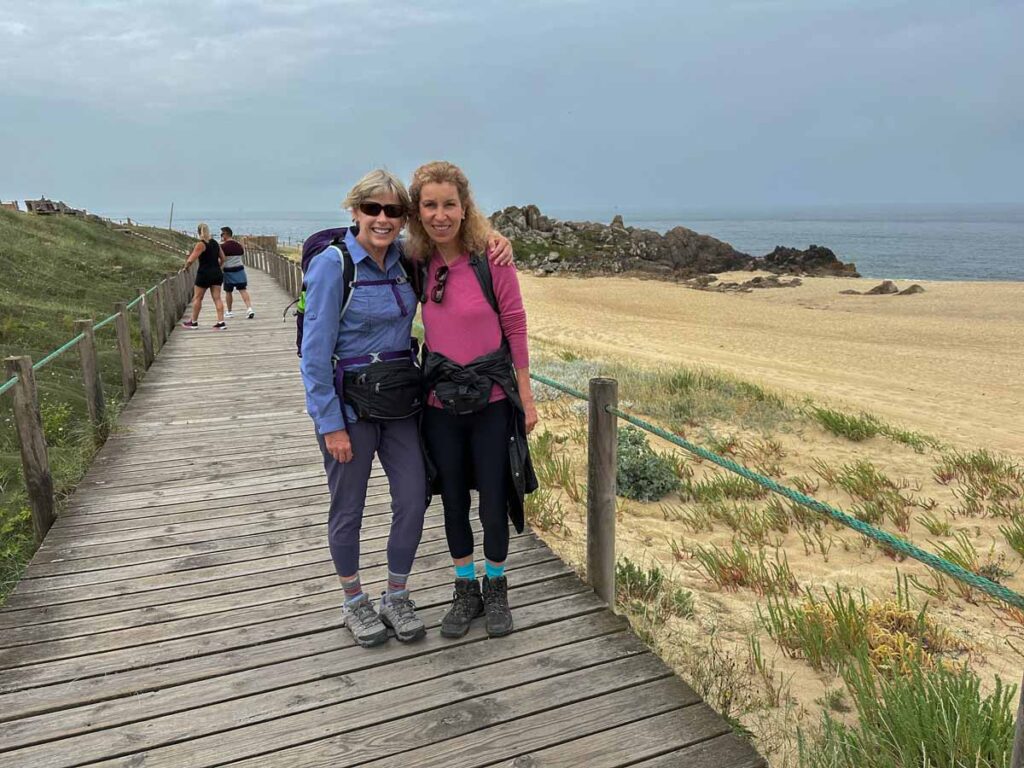


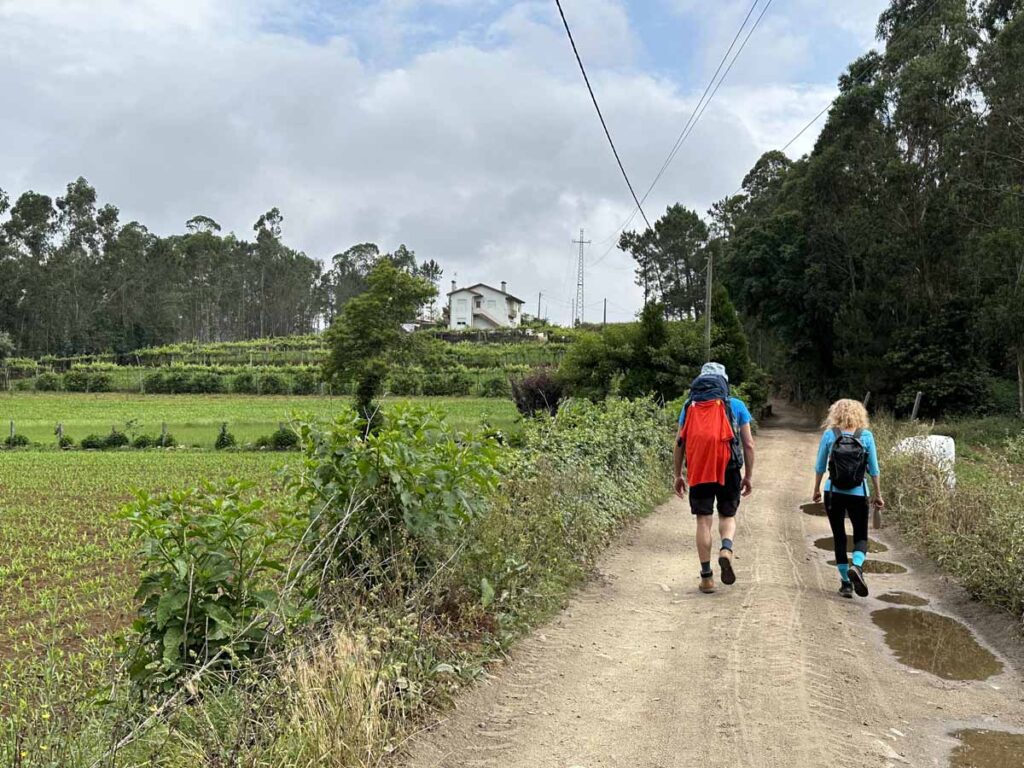










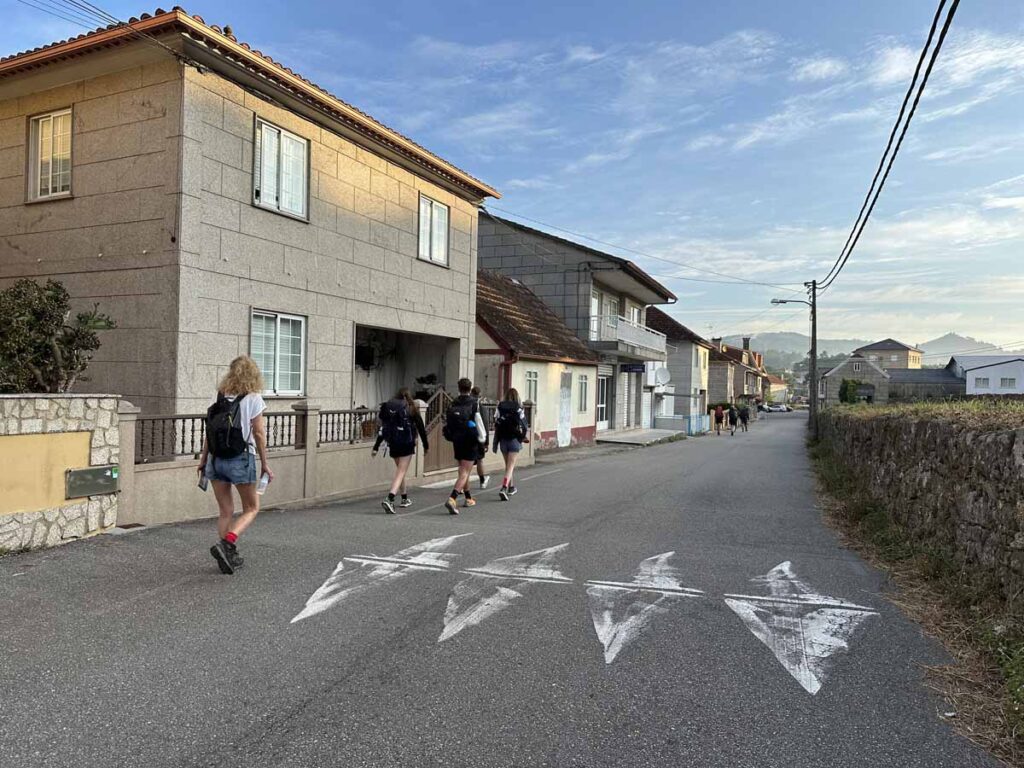
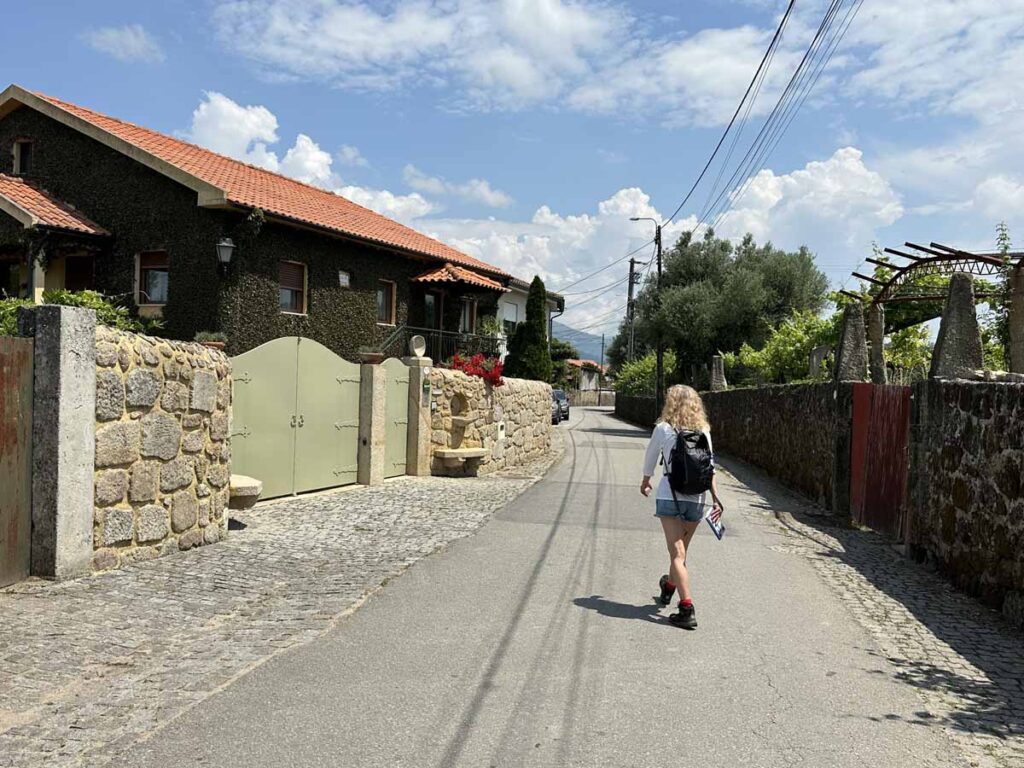
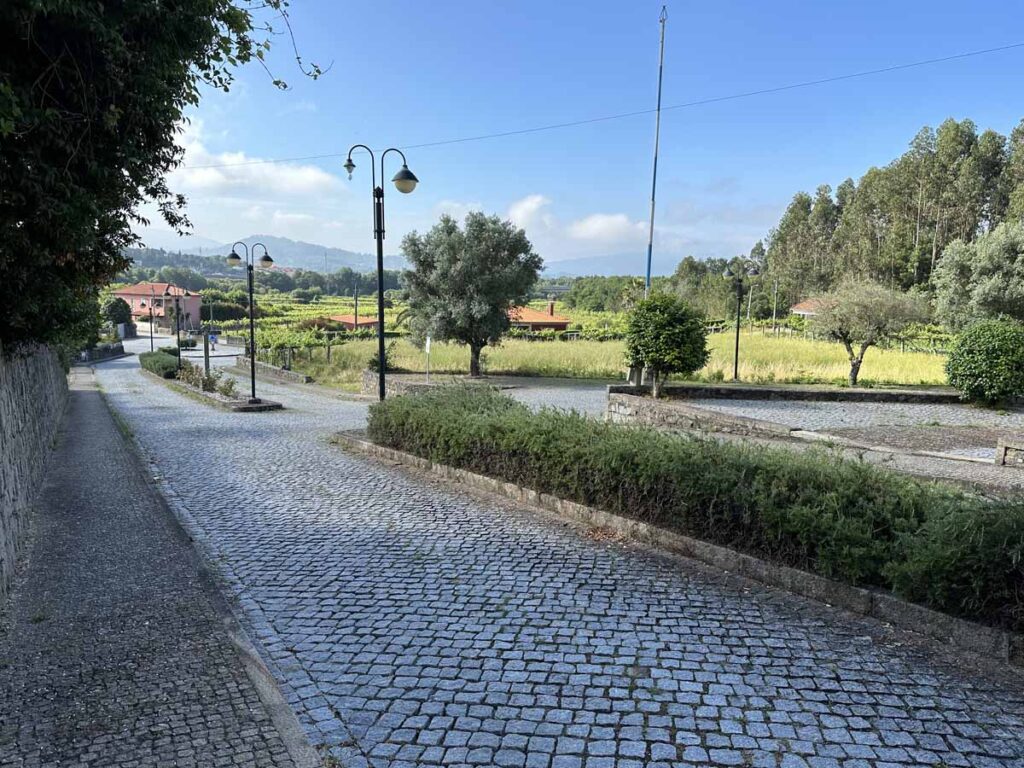
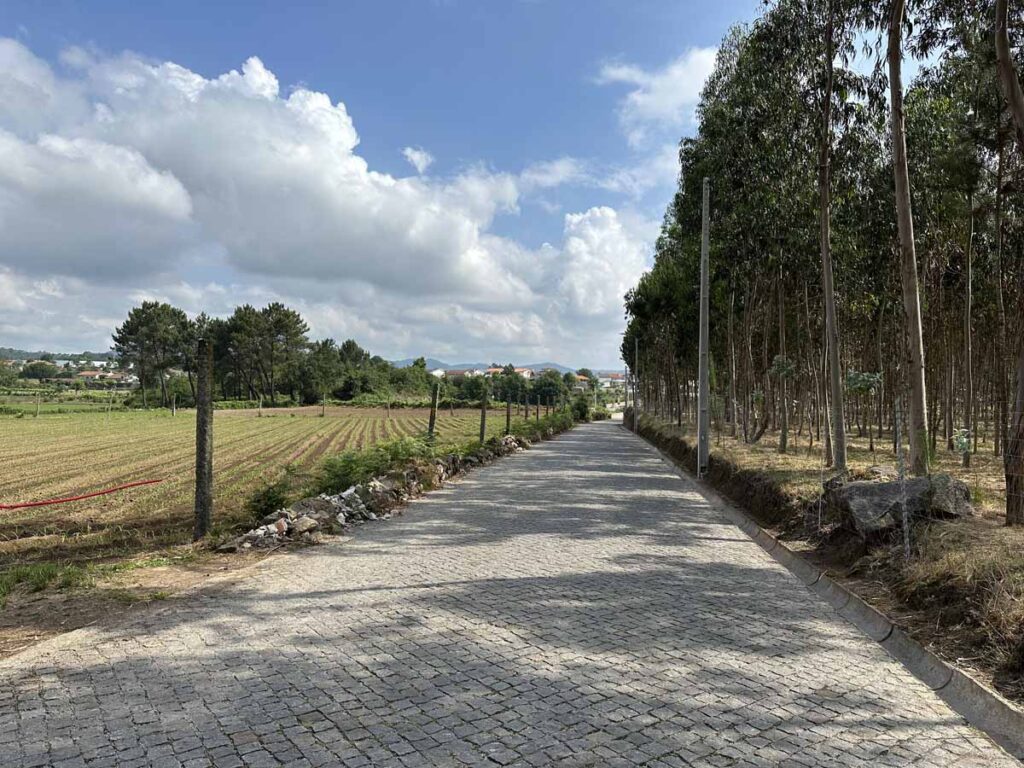



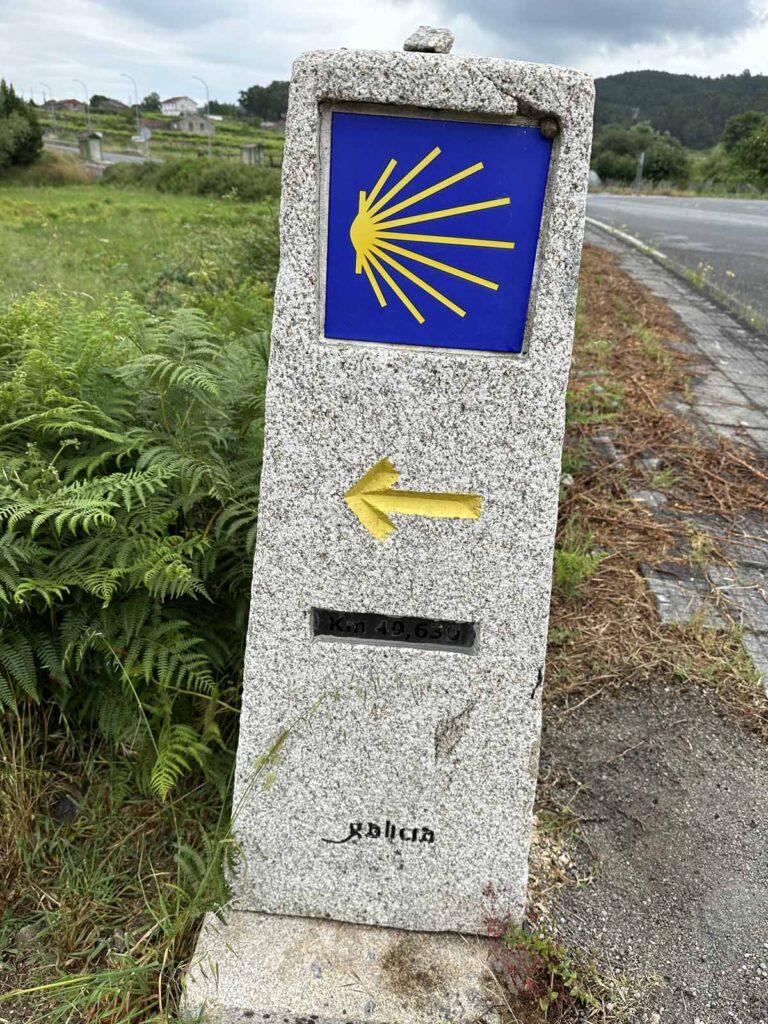



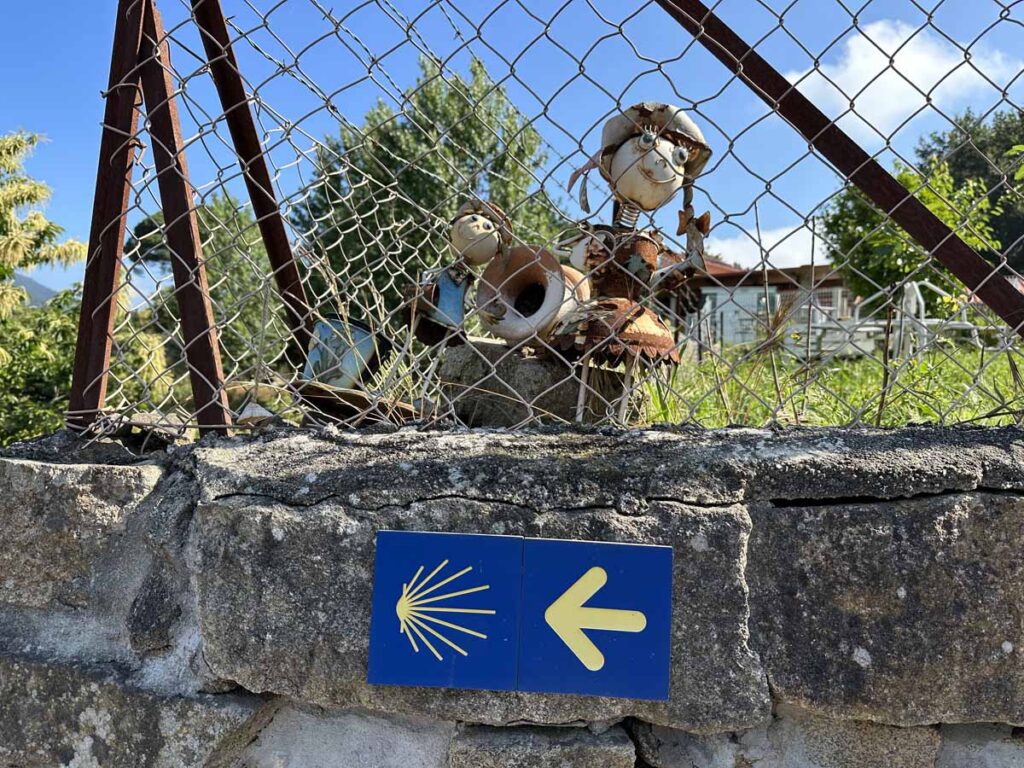



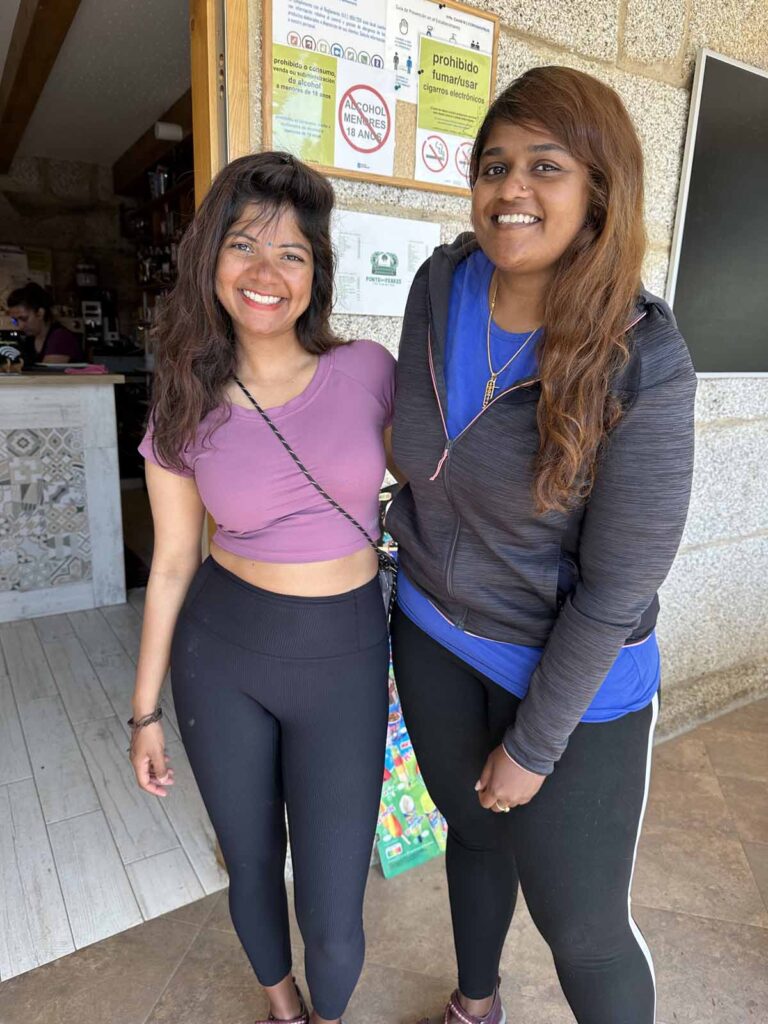














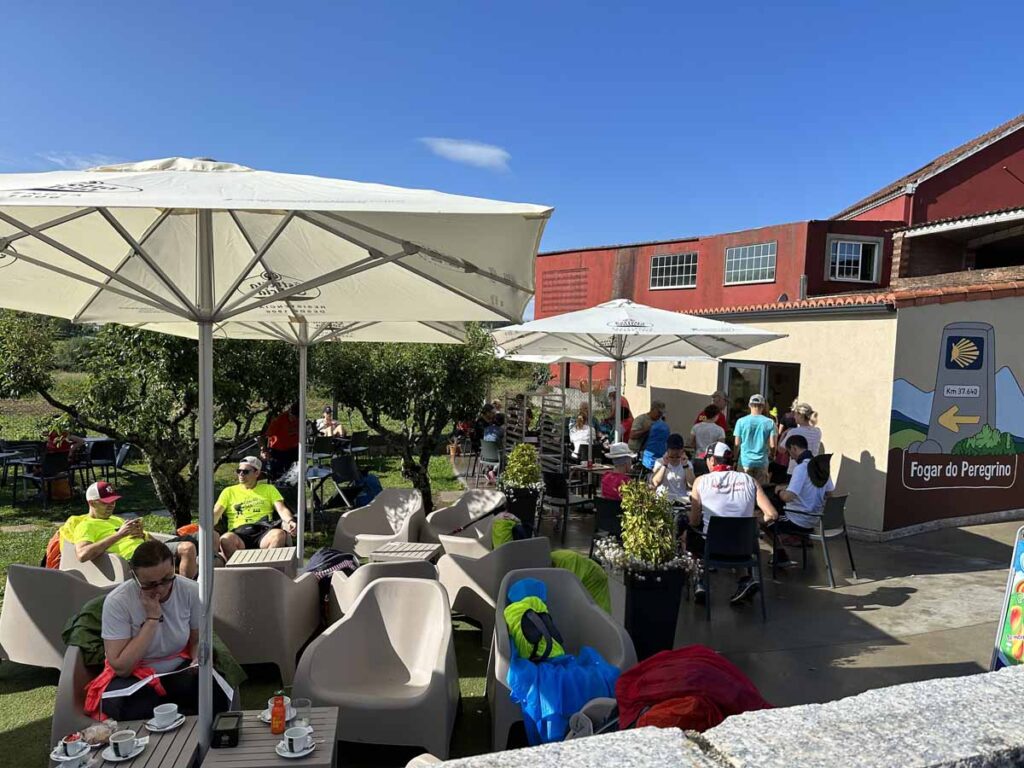



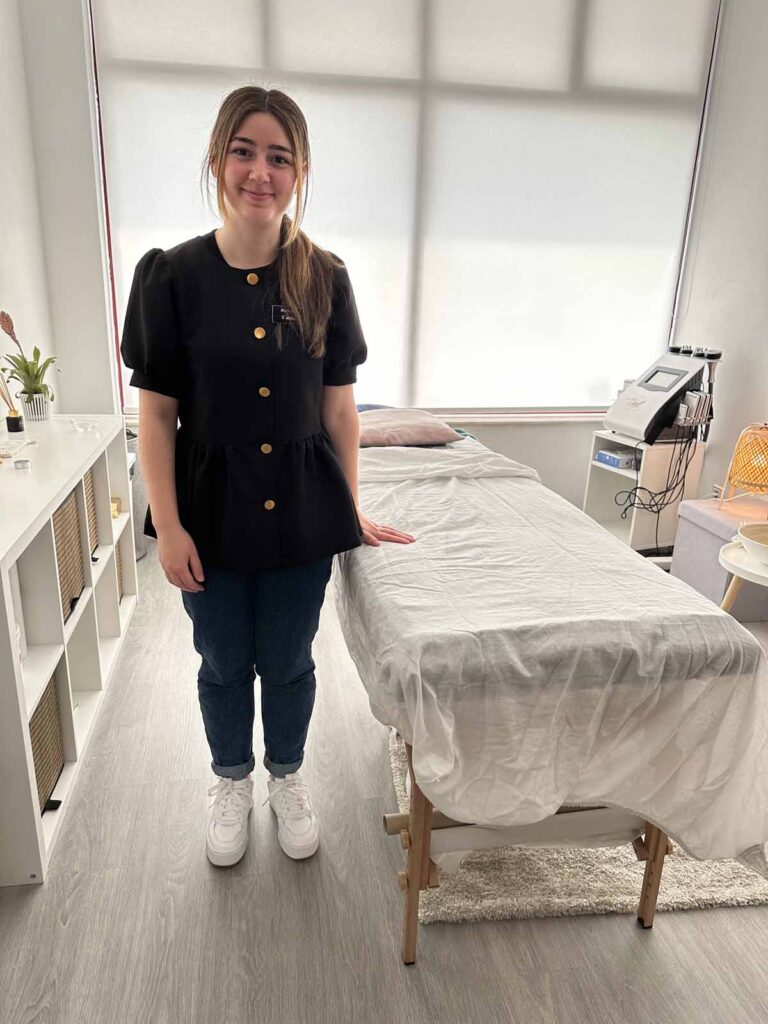











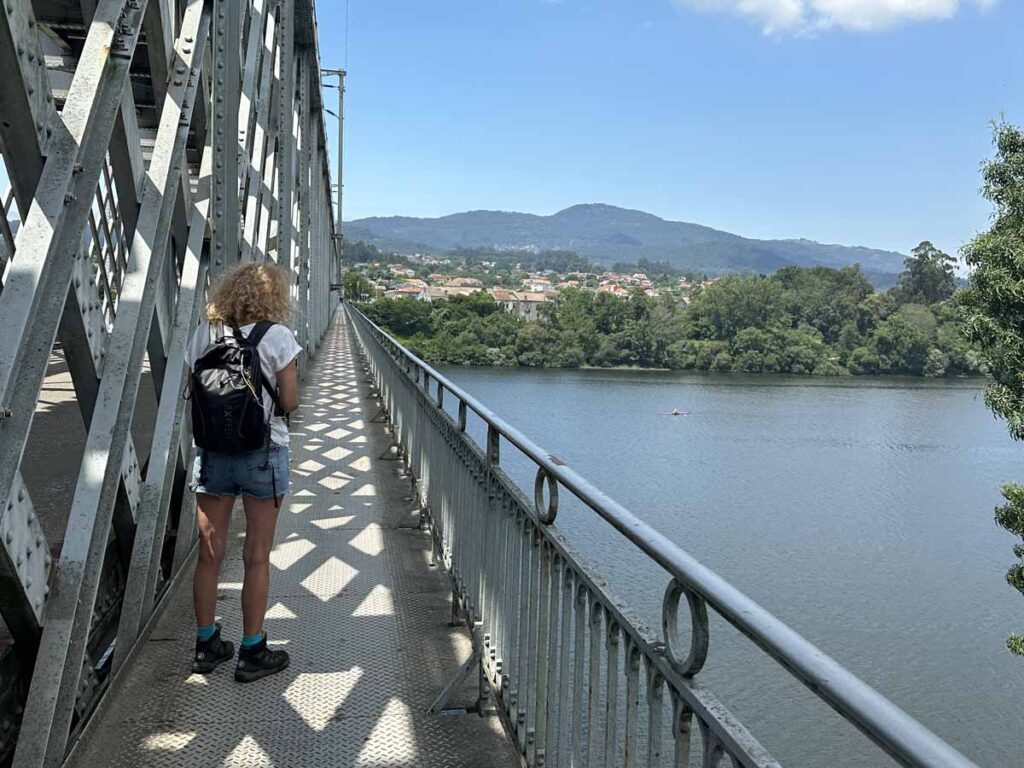

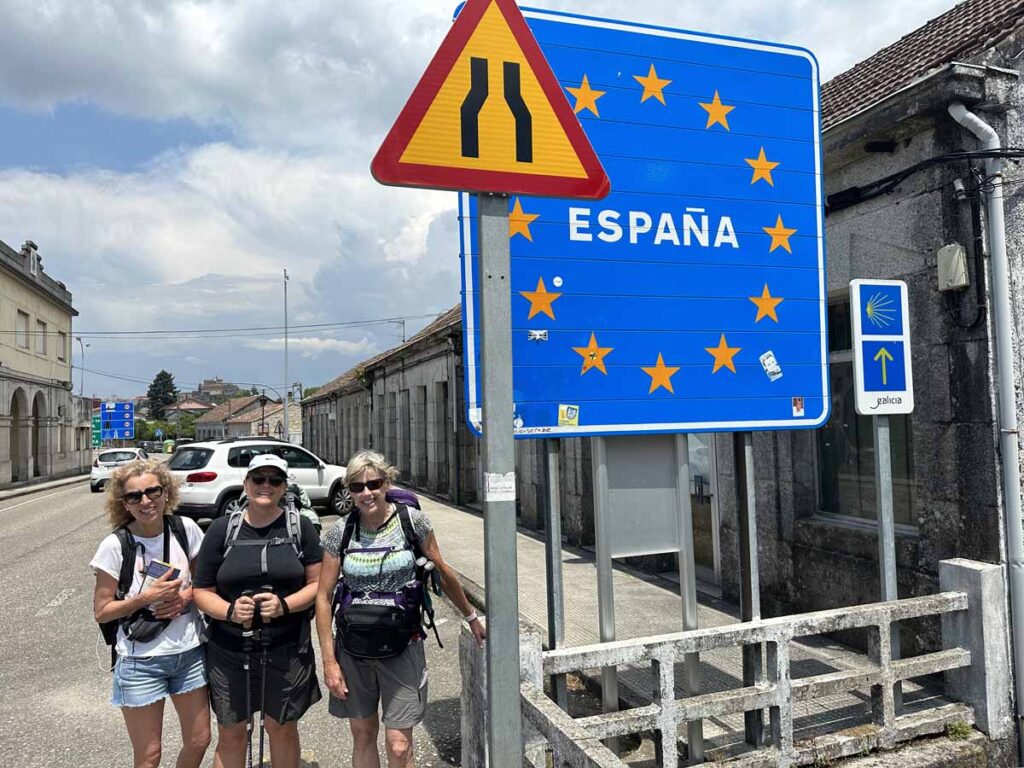

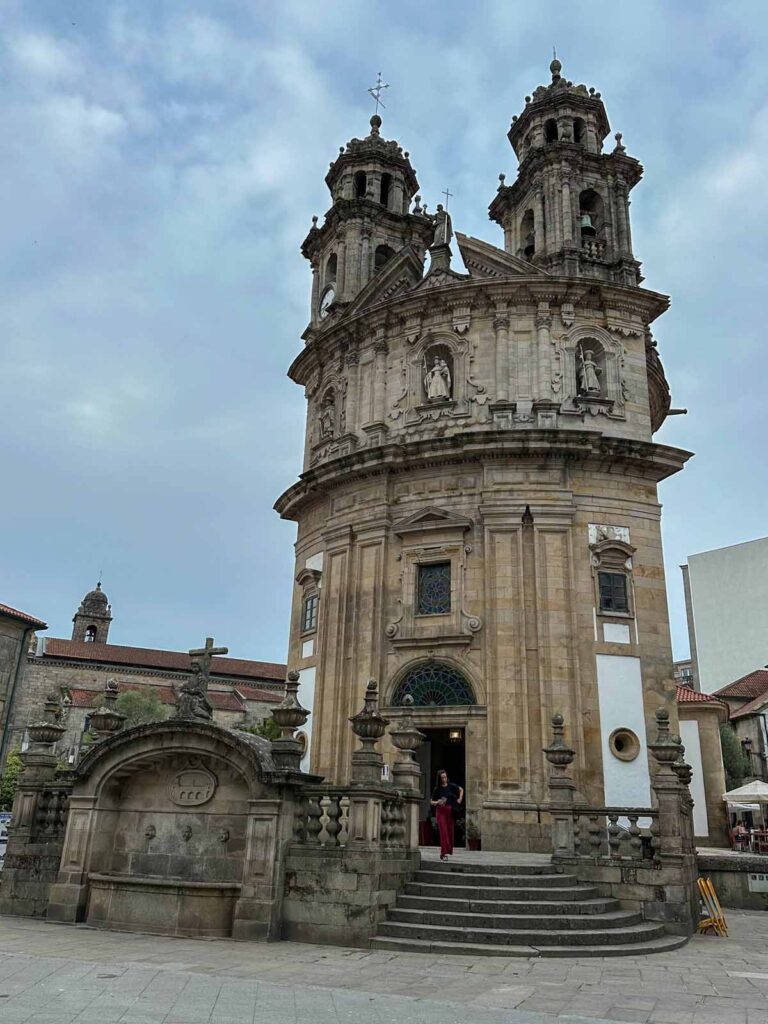

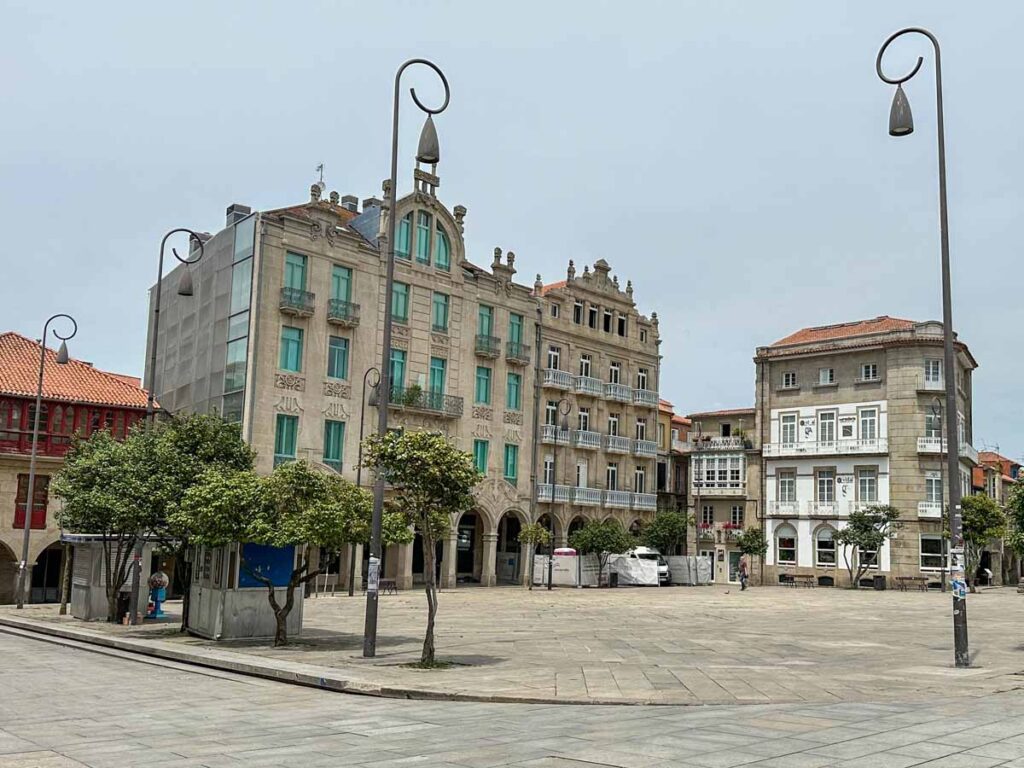

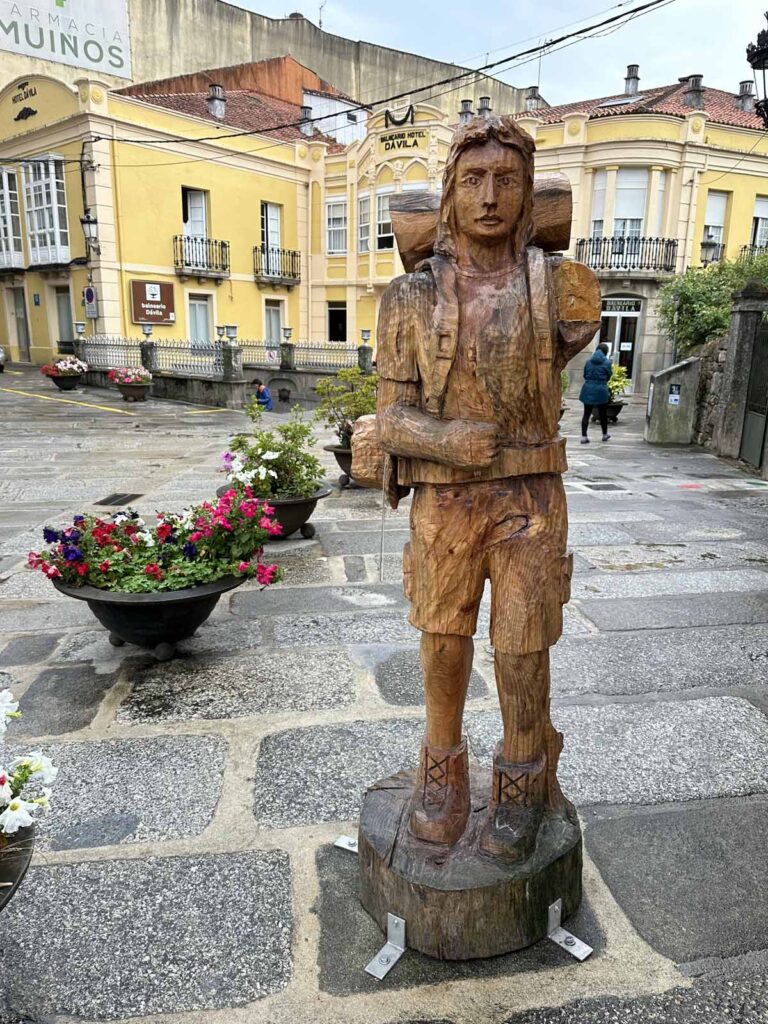
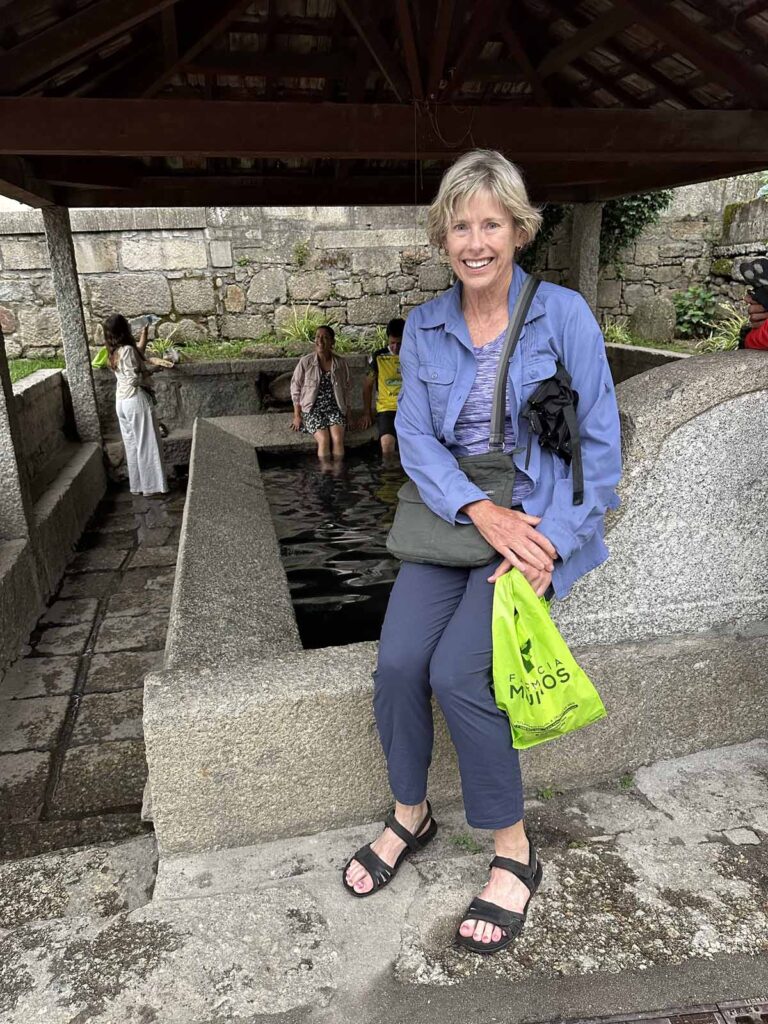


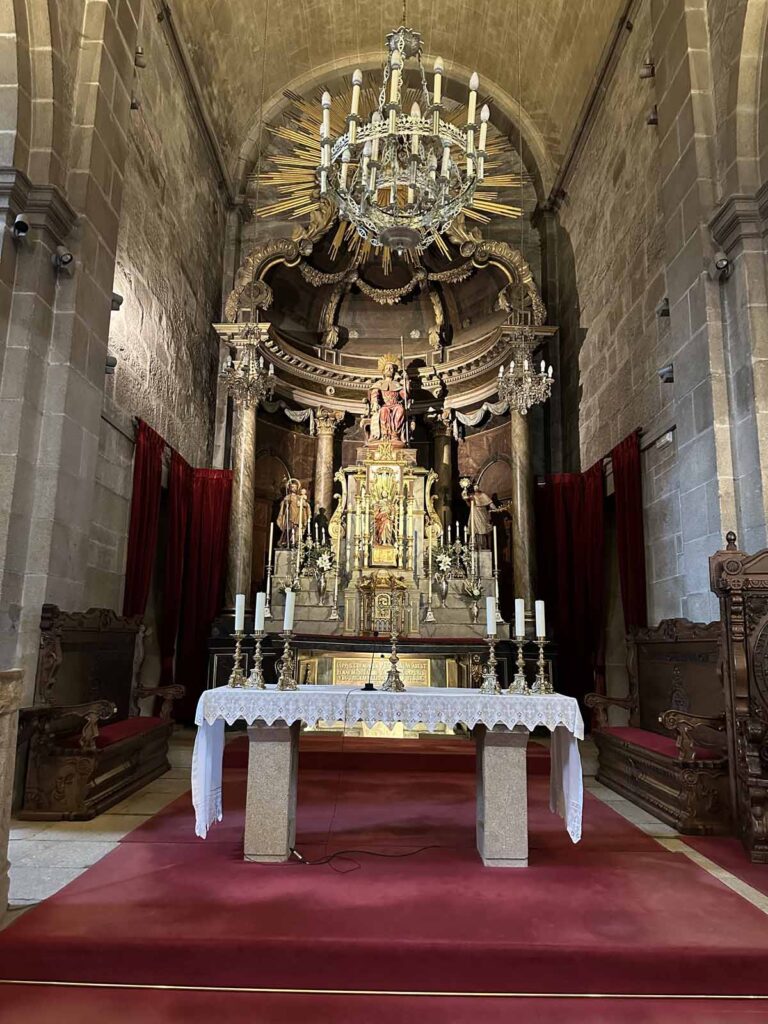




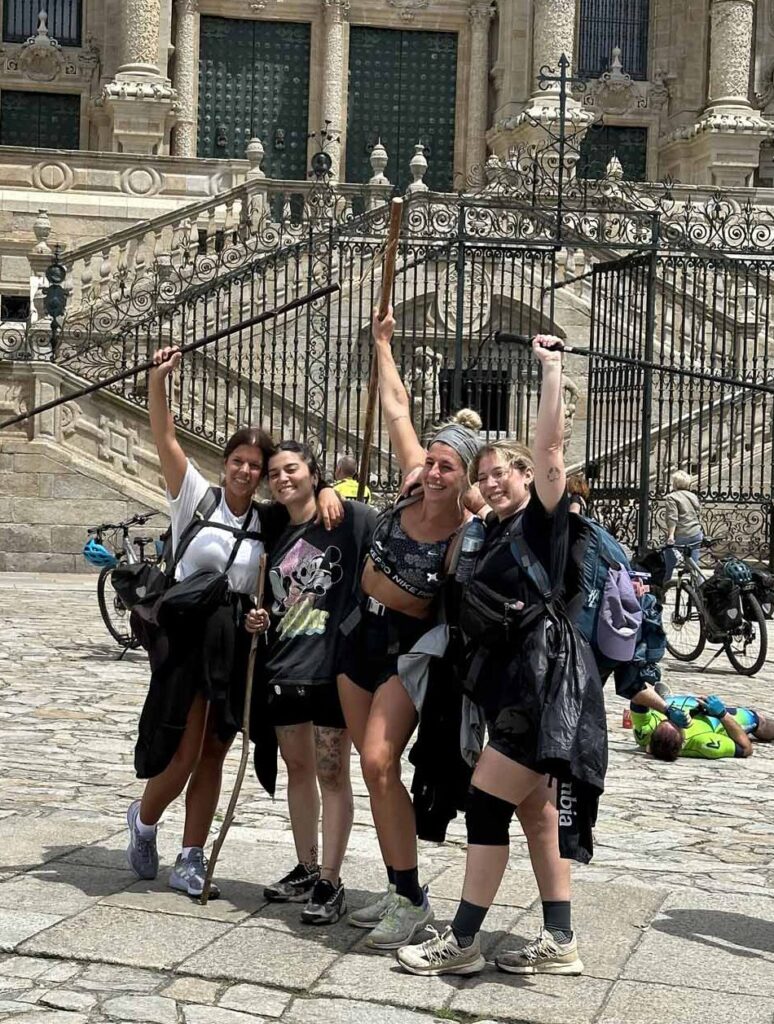

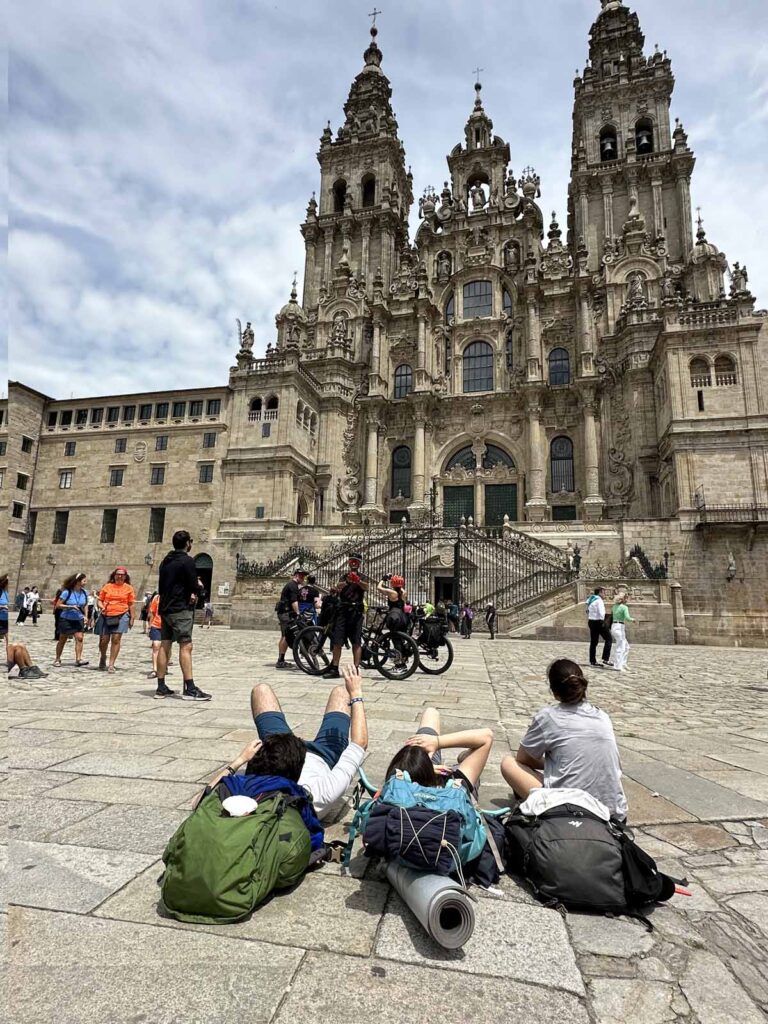
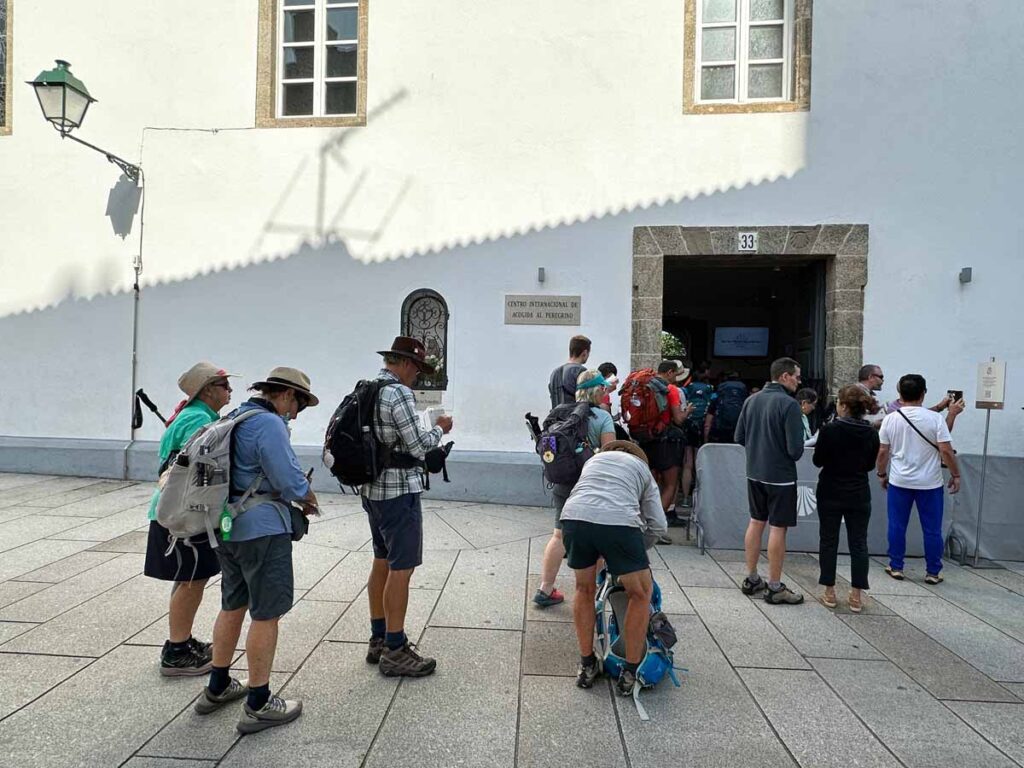

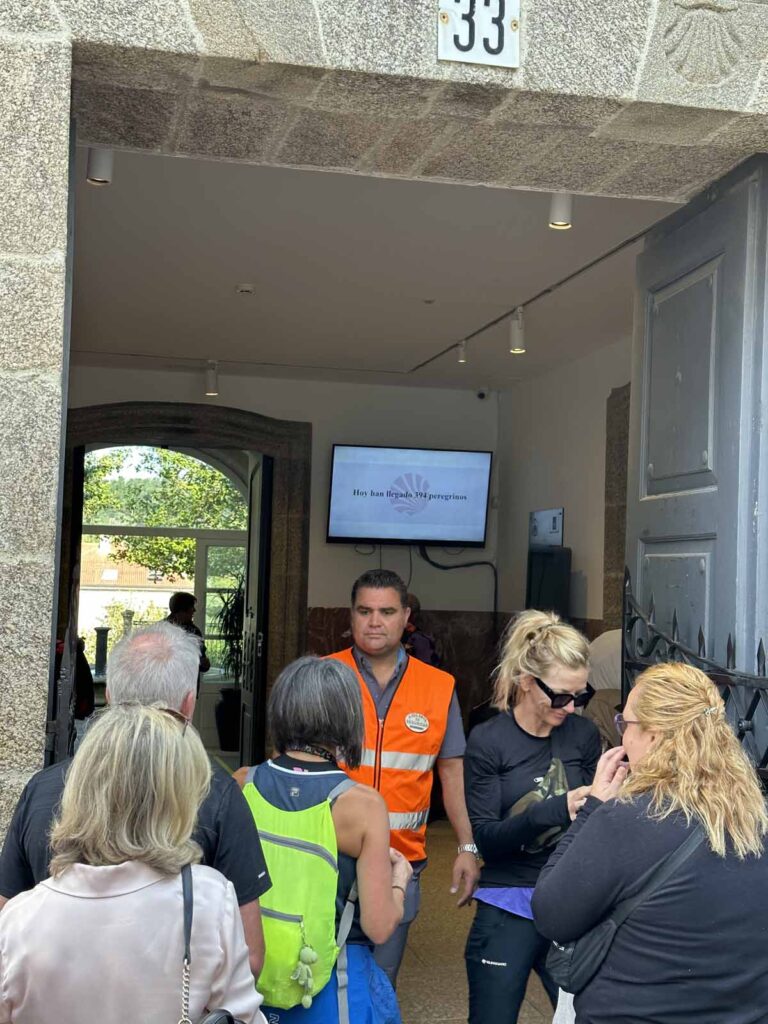


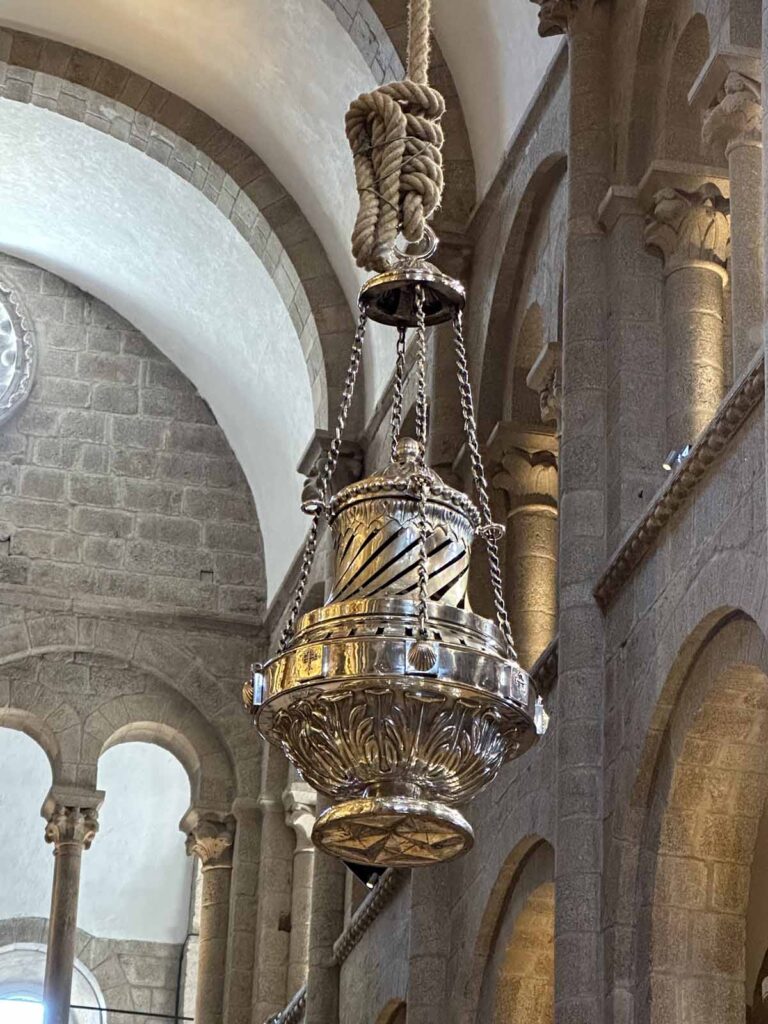

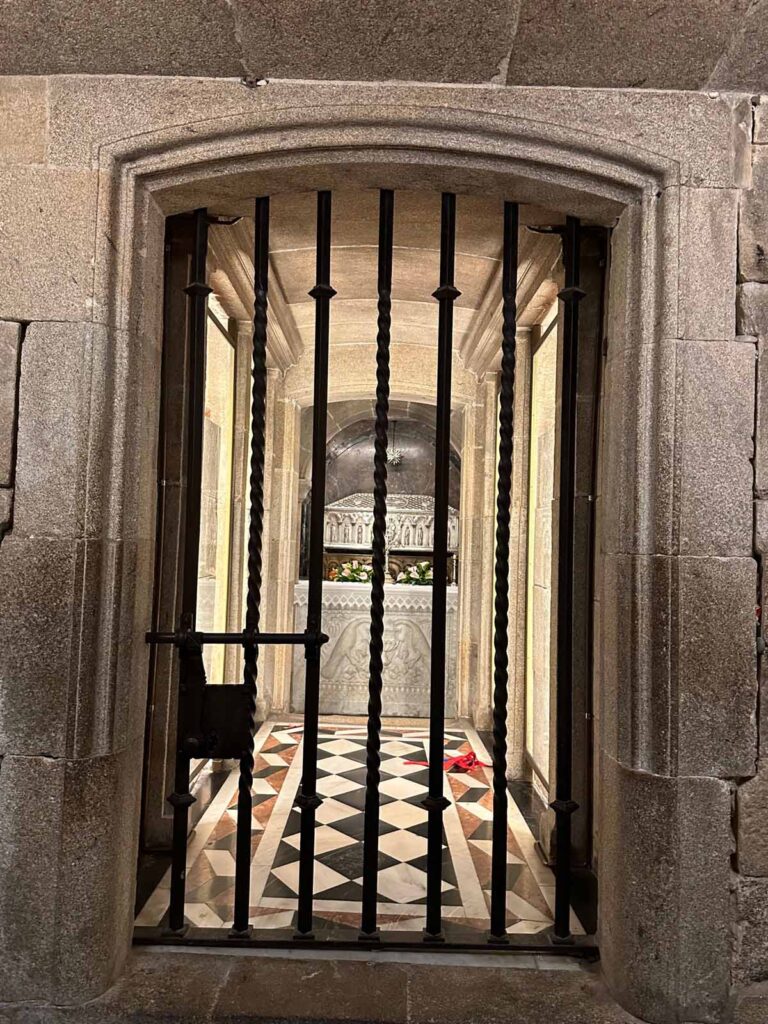
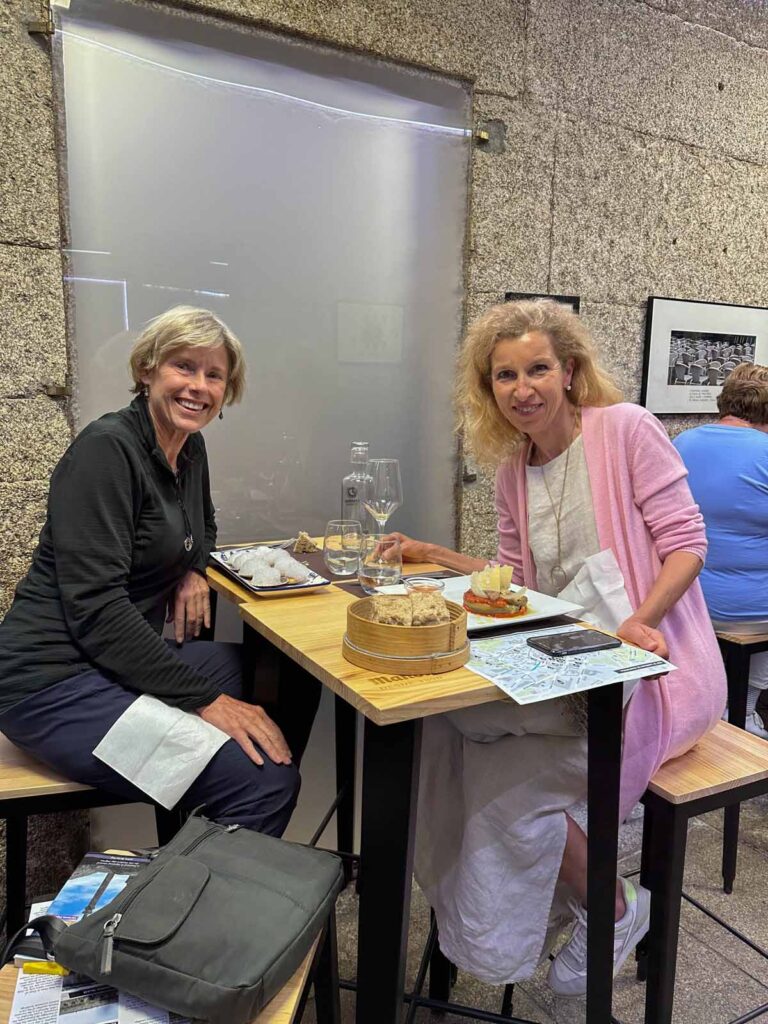
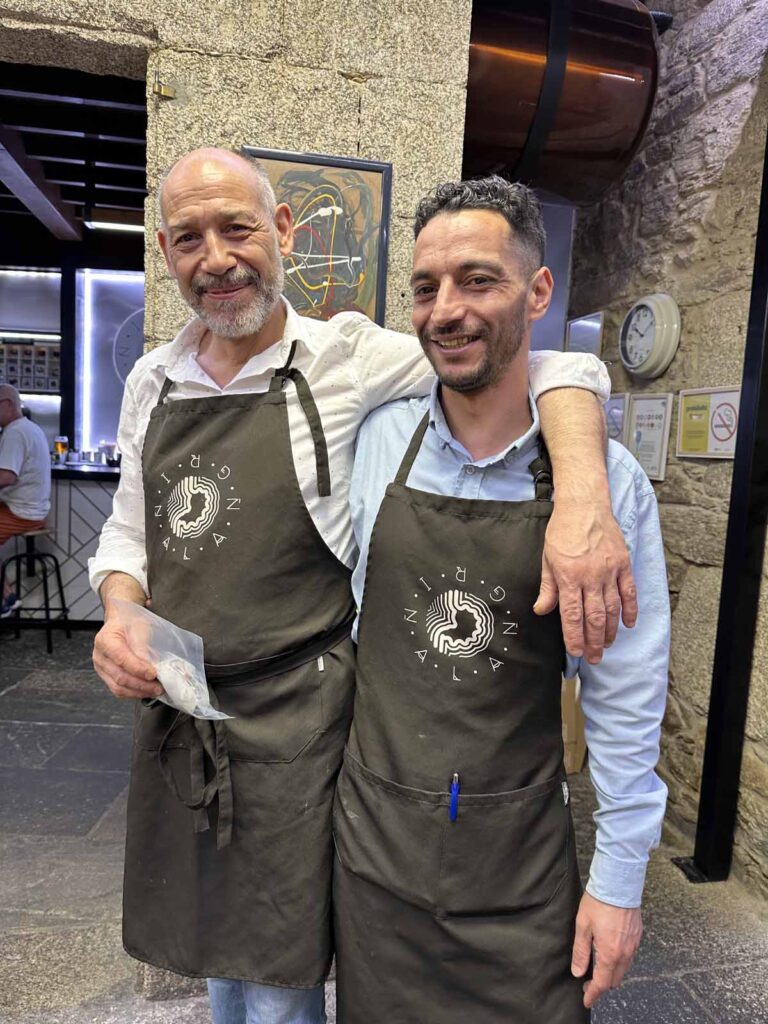
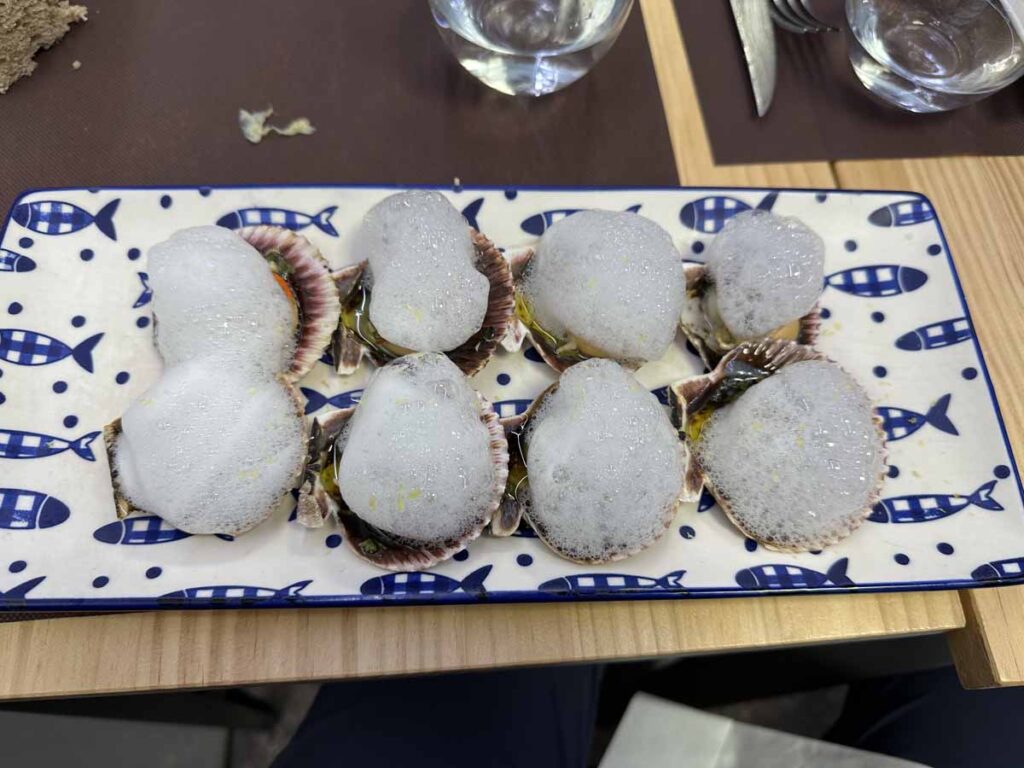


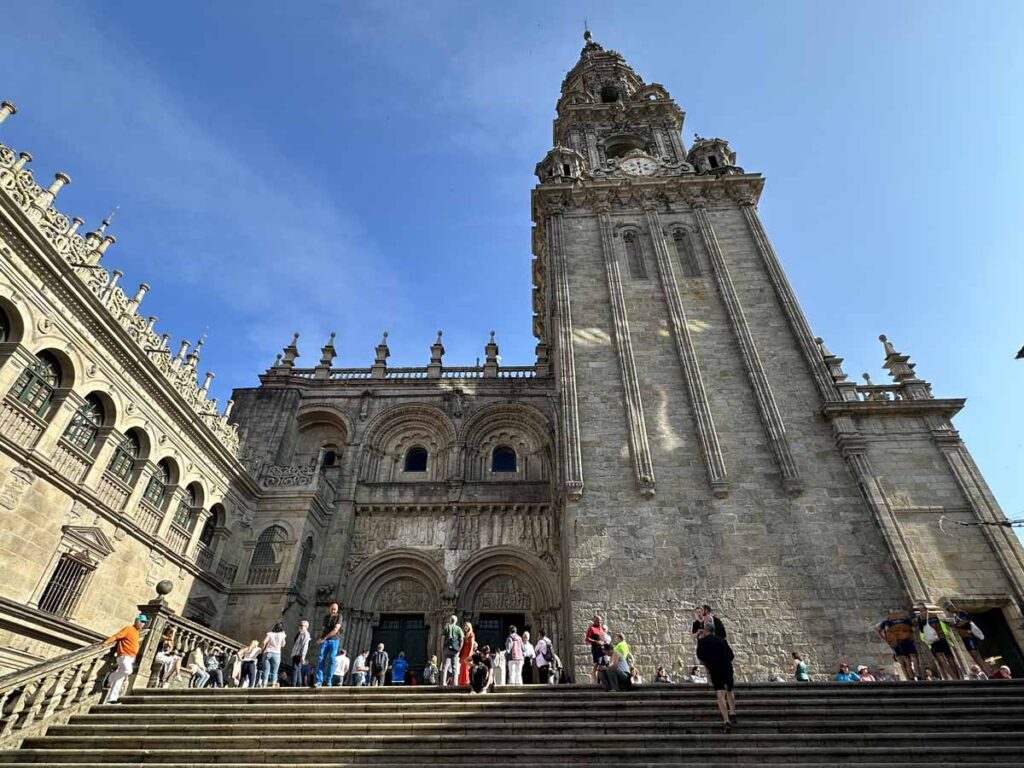






I loved your detailed description of another fabulous experience walking the Camino. You inspire me to plan a walk. Bravo and cheers my friend.
Thank you, Nadia! Glad you were inspired about a possible Camino. Knowing you well, I can definitely see you walking a Camino & really enjoying it.
Janet,
Felt like I was with you on your latest Pilgrim Journey. Fantastic journaling and sharing with me and many others.
I know you have another very interesting trip planned in October. One of my friends will be joining you.
Thanks so much, Beverly for your very kind words! And, yes, another wonderful (and very different) trip planned for the fall – Israel & Jordan. And more blog posts to share.
Hi there Janet,
This year I’m off to the Via de la Plata, I actually leave New Zealand in 5 weeks time. Last year I did the CF again so that was my 3rd time and my son met me 100km out of SD in Triacastela. We went to Madrid together for a few days and I took him to the Churros and chocolate place where you took me.
I do enjoy reading your travel updates.
Mark Mcilroy
Hello Mark, dear Camino friend from 2016! So nice that we have stayed in touch and great to get your update. The Camino has definitely gotten into your blood with multiple Caminos now under your belt – impressive! And how cool that your son joined you on the last CF. I just finished reading a wonderful new book by the actor Andrew McCarthy entitled “Walking with Sam” about his full Camino Frances in 2021 with his 19yo son. So funny, poignant and real! Have a great Camino on the Via de la Plata! Please do let me know how it went for you.
Hi Janet, what a great and totally authentic blogpost on our Camino! It was exactly the way you describe it. Thanky you!!
Your longtime friend and recent Camino partner Regina ❤️
Thanks so much, Regina. Glad you enjoyed… It was great traveling with you & sharing the wonderful Camino experience. And, thanks also for being such a good “photo model” for so many of my pics!